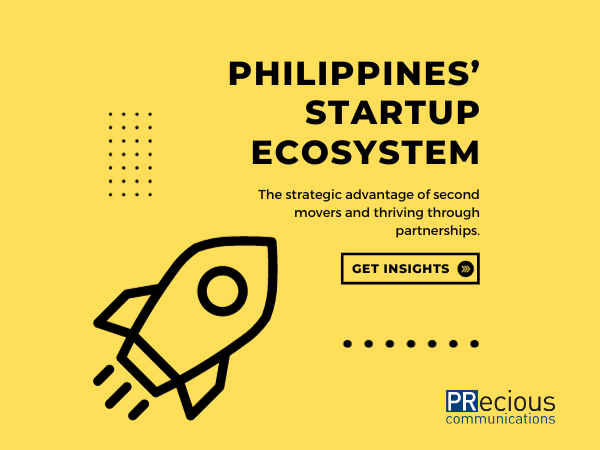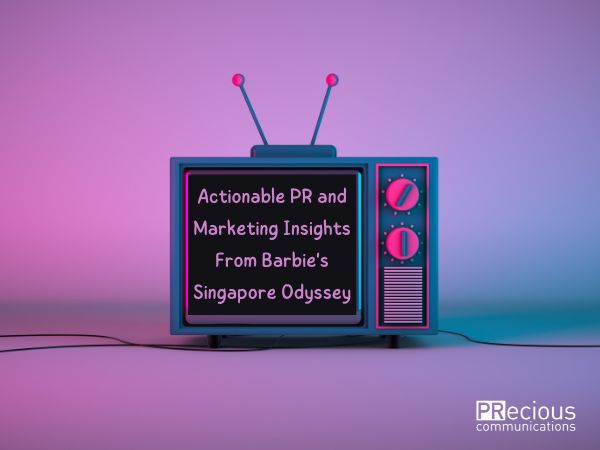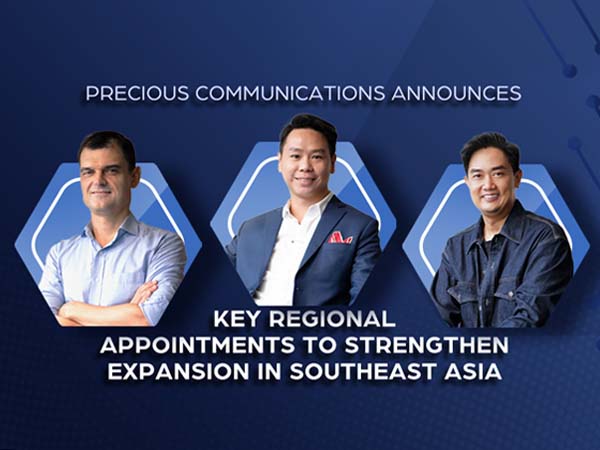Key Crisis Communication Lessons to Learn from Singapore’s Handling of Covid-19

What We Learnt About Communicating Effectively from our First Jobs
March 11, 2020
Supporting the President’s Challenge With an Out-of-the-Box Public Relations Campaign
March 22, 2020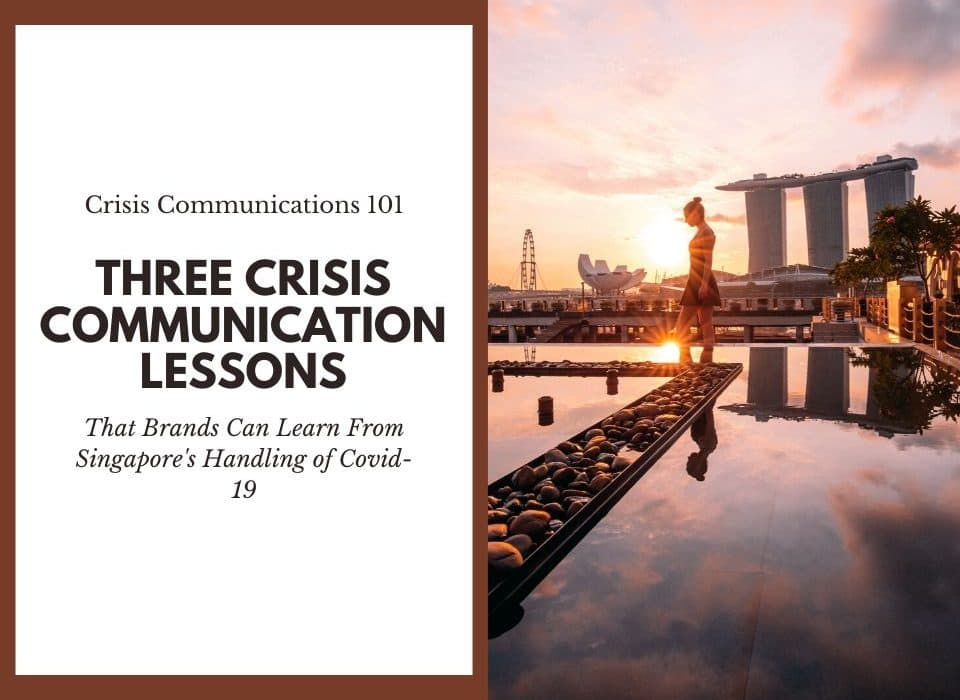
Crisis communications lessons are all around us. Lars Voedisch highlights three crisis management tips that businesses can learn from the Singapore Government’s handling of Covid-19.
Crisis management lessons are all around us. However, one of the most effective crisis communications approaches in recent times are the steps taken by the Singapore government in the handling of Covid-19.
Every photographer is aware of the “Golden Hour”, the period just after sunrise or just before sunset, when everything the sunlight touches looks beautiful. There is a golden hour in crisis communications as well, when organisations, irrespective of their size, can disseminate crucial information about an incident, and prevent it from becoming a full-blown crisis. With the advent of social media and messaging platforms, that golden hour is reduced to minutes, so responding quickly is of utmost essence.
Brands need to have a crisis management strategy much in advance to anticipate anything that could actually, or potentially, damage their reputation. However, drafting a plan during a crisis can be difficult or expensive, as emotions tend to run high and events are occurring rapidly. Here are three key lessons that companies can learn about effective crisis communications from the Singapore government and several examples to get inspired by.
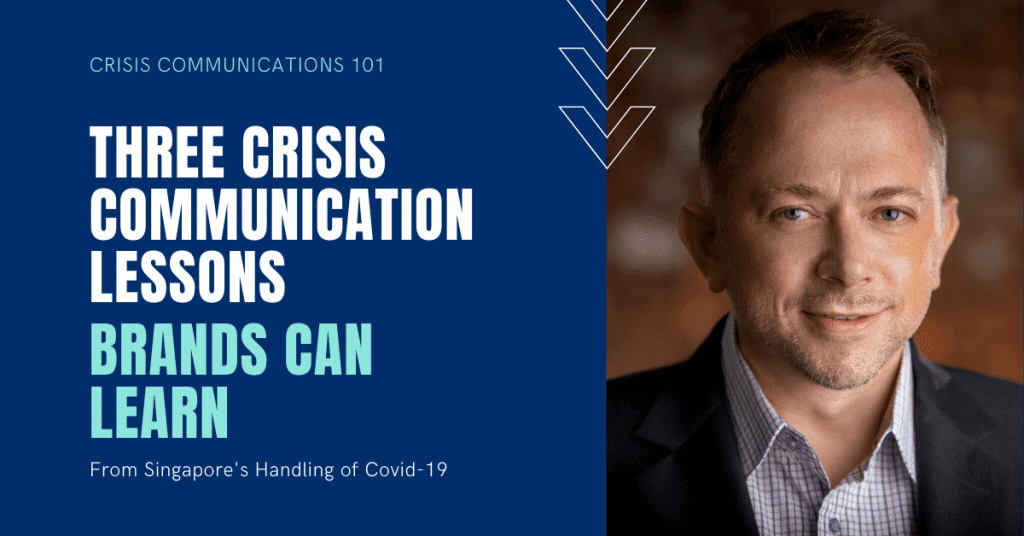
Crisis communications lessons are all around us. Lars Voedisch highlights three crisis management tips that businesses can learn from the Singapore Government’s handling of Covid-19.
Build Trust and Transparency
Building trust is the foundation. To do this, organisations need to be proactive, be transparent and be accountable during crises. A few ways that companies can build trust include ensuring that your message is consistent across the board. It’s important not to play the blame game, own up and take responsibility, and ensure that your spokespeople are honest and show empathy. These measures help to build trust and prepare all stakeholders ahead of time.
While some other countries are classifying top-level coronavirus deliberations as restricted information, thus hampering the response to the contagion, Singapore has been insistent on being transparent. Examples of this include the availability of detailed daily case summaries and providing regular updates on the steps taken to control the situation. PM Lee, as well as other political figures, have communicated early and frequently to give reassurance and address the medical, economic and psychological fallout of Covid-19.
Be Available on Your Audience’s Preferred Channels
During a crisis, it is essential to communicate rapidly with a lot of stakeholders, control the narrative and to be proactive, not reactive. To achieve this, an organisation has to be available on their audiences’ preferred channels, and not the other way around. Apart from having the information available on your website, different channels may include relevant social media platforms (and specific groups within these platforms), messaging platforms (WhatsApp, WeChat, Telegram etc.) and most importantly, targeted media publications.
Here’s how the Singapore Government uses its audience’s preferred channels to reach their audience. Firstly, there is a dedicated website, which has the latest information, FAQs and clarifications on misinformation regarding COVID-19. There are also easy to understand infographics on ‘how to practise good hygiene’ and ‘DORSCON alert levels explained’ among several others. Secondly, the government runs a WhatsApp channel to enable everyone to receive the latest information about the COVID-19, clarifications about Govt-related fake news and other Government updates, available in multiple languages. Last but not least, all major media publications provide regular updates, including case by case details as provided by the government.
Set an Example by Walking the Talk
One of the golden rules of crisis communications is to monitor, plan and notify all stakeholders, including employees, clients and partners. During a crisis, every move from the company and actions by spokespeople and employees are scrutinised. Since everyone is on tenterhooks, it is even more challenging, yet important, to avoid knee-jerk reactions and provide a clear picture of the situation without any exaggeration. Hence establish communications protocols within the company and ensure that employees walk the talk and reflect the overall position.
In the fight against Covid-19, the Singapore Government recently announced a slew of new measures, including the need for social distancing. The following day, at a Covid-19 press conference, Health Minister Gan Kim Yong and National Development Minister Lawrence Wong, as well as all the reporters were seated 1m apart. The original format was meant to be a ‘doorstop’, where the media interviews a politician or other public figure as they enter or leave a building.
While the Covid-19 crisis took the world by storm, the WHO praised Singapore’s efforts and held the city-state up as an example for other countries to emulate. While other countries can learn from Singapore about the handling of Covid-19, companies, in general, can pick up lessons on how to communicate before, during, and after the negative occurrence.
Finally, if there is one lesson that is left to share, is to understand that the narrative changes daily, so in a situation like this, one cannot rest on your laurels, and have only one set playbook.
This article was written by Lars Voedisch, Founder and MD, PRecious Communications. It was first published in The Business Times on Friday, 20th March 2020. Read the original article – How to play the crisis communications game.

